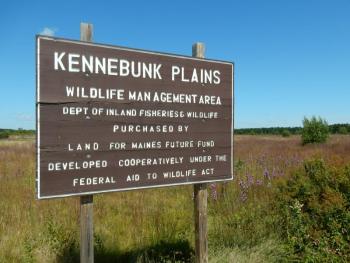Ever heard of the term “conservation birding?”
We hadn’t until this past week when we came across an academic paper that used the term in the title. The authors described a theoretical scenario in which birders from a make-believe city had a choice to go out birding in two places. One location was a place that was not regularly visited by birders so there was relatively little information about its birds. The other spot was more regularly visited but there was still much not known about what birds occurred there.
As they pointed out in the paper, the majority of people would suggest that the most useful thing for them to do would be to go birding at the place for which there was very little data and to submit that data to eBird or some other relevant community science project.
But the authors had a different take. They proposed that what would be most useful would be for the birders to target their birding in the place where the bird populations had the highest likelihood of being impacted, typically by habitat loss, fragmentation, conversion, pollution, or some other factor.
Why?
Because we should have the best available information about how our human impacts could change bird and other wildlife populations and the overall environment.
It’s a great point.
More often than not, the kinds of biological inventory work that gets done before a major change is considered for a place that will result in loss and/or change of habitat, or other impacts, is very limited and cursory. We reviewed dozens and dozens of such quick-and-dirty inventories or studies done prior to some big project, and very few provide much of any information that is even relevant to understanding the true potential impacts.
Imagine changing this scenario so that dozens of enlisted birders spent more time birding (and adding their data to eBird) in places whose fate was undecided but for which we did not have enough information to make an informed decision about the potential impacts? Now imagine people who look for butterflies, dragonflies, plants, bees, frogs, salamanders, and other living things doing the same and perhaps submitting the data to iNaturalist?
That’s what the authors call “conservation birding.”
We have tried to do our own version of “conservation birding” over the years at different times and places. We well remember doing lots of birding (and documenting other living things as well) and encouraging others to bird at the Kennebunk Plains when its fate teetered dangerously close to becoming a housing development. We enjoyed spending time birding and leading bird trips in the lands that were being contested as the Katahdin Woods and Waters National Monument, to increase the knowledge and support of those lands becoming and staying a public resource.
Even more recently, we worked to survey—and to get others to survey—a plot of land in a nearby town that was being considered to either be sold for development or become a bird sanctuary. In Gardiner, a coalition has encouraged more birding visits to the Harrison Avenue Nature Trail. Since the trail opened a few years ago, birders have demonstrated to the community the importance of the natural habitat along Cobbosseecontee Stream, including the need to allow migratory alewives to return upstream to their native spawning grounds. Birding visits also show how nature trails and other natural areas can also bring visitors to the community who will frequent local businesses and contribute to the community’s economic well-being.
Next time you are deciding where to go birding, consider doing it with a conservation purpose in mind.
You’ll be able to call yourself a “conservation birder!”
Jeffrey V. Wells, Ph.D., is a Fellow of the Cornell Lab of Ornithology and Vice President of Boreal Conservation for National Audubon. Dr. Wells is one of the nation's leading bird experts and conservation biologists and author of the “Birder’s Conservation Handbook.” His grandfather, the late John Chase, was a columnist for the Boothbay Register for many years. Allison Childs Wells, formerly of the Cornell Lab of Ornithology, is a senior director at the Natural Resources Council of Maine, a nonprofit membership organization working statewide to protect the nature of Maine. Both are widely published natural history writers and are the authors of the popular books, “Maine’s Favorite Birds” (Tilbury House) and “Birds of Aruba, Bonaire, and Curaçao: A Site and Field Guide,” (Cornell University Press).


.JPG)



























